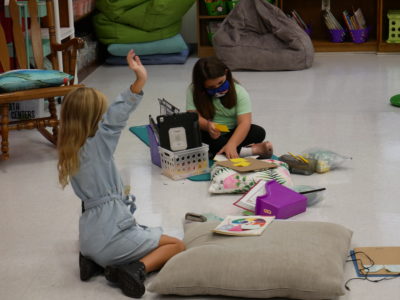
Since the summer of 2020, we have been studying the impacts of the COVID-19 pandemic on K-12 students, educators, and schools in North Carolina. This includes surveying educators across the state, assessing changes in student enrollment, and, with our latest research brief, examining educator attrition and hiring in North Carolina public schools. In particular, our new work on the educator workforce extends into the 2021-22 school year to track patterns in attrition and hiring and to examine the characteristics of educators who are leaving North Carolina public schools and the schools from which they leave.
Overall, there are four takeaways from our recent analyses.
First, after drops in teacher attrition during the first year of the pandemic (February 2020 to February 2021), attrition was higher than pre-pandemic levels in the most recent year (February 2021 to February 2022).
Specifically, teacher attrition was up two percentage points relative to pre-pandemic averages. This is equivalent to nearly 2,000 additional teachers leaving North Carolina public schools. North Carolina is not alone in these findings, as studies from other states and districts show increases in teacher attrition in the 2021-22 school year.
The key question these findings raise is how North Carolina can further support its educators — during these challenging times — and lessen attrition in 2022-23 and beyond.
Second, attrition increases in 2021-22 were higher for certain teacher groups. Relative to pre-pandemic levels, beginning teachers (i.e. less than three years experience) were 4.4 percentage points more likely to exit teaching in North Carolina public schools in the most recent year. This equates to nearly 500 more beginning teacher departures and signals the potential challenges of learning to teach in pandemic conditions.
At a time when North Carolina is trying to diversify its teacher workforce, increases in attrition in the most recent year were two times higher for teachers of color (2.9 percentage points) versus white teachers (1.5 percentage points). Likewise, results show that educators with higher levels of performance — higher EVAAS estimates and NCEES ratings — experienced larger attrition increases in the most recent year.
These data points are concerning, as developing new teachers and keeping diverse and effective educators is essential to student learning recovery and acceleration.
Third, gaps in teacher attrition between schools educating many versus few students of color and low-income students have narrowed during the pandemic. While encouraging, this is due to attrition rates remaining constant in high-priority schools and increasing in schools educating fewer traditionally marginalized students.
High-priority schools still have significantly higher teacher attrition rates. Longer-term, North Carolina needs to increase teacher retention in these high-priority schools to benefit student learning and development.
Lastly, we found that teacher hiring and attrition tracked with each other during the pandemic. As teacher attrition rates dropped during the first year of the pandemic, there were fewer newly-hired teachers in North Carolina public schools — down from a pre-pandemic average of 9,400 to 7,500 at the start of the 2020-21 school year.
With teacher attrition increasing in the second year of the pandemic, North Carolina had 10,300 newly-hired teachers in September 2021. This signals a need for districts and schools to provide the supports and resources — e.g. coaching and mentoring, professional development, high-quality instructional materials, time for planning/collaboration, compensation — that will help these educators succeed and stay in teaching.
Well-supported and effective teachers are essential to the state’s pandemic recovery. We hope this work helps policymakers and practitioners understand the current state of North Carolina’s teacher workforce and informs ongoing decisions regarding the preparation and support of teachers.




